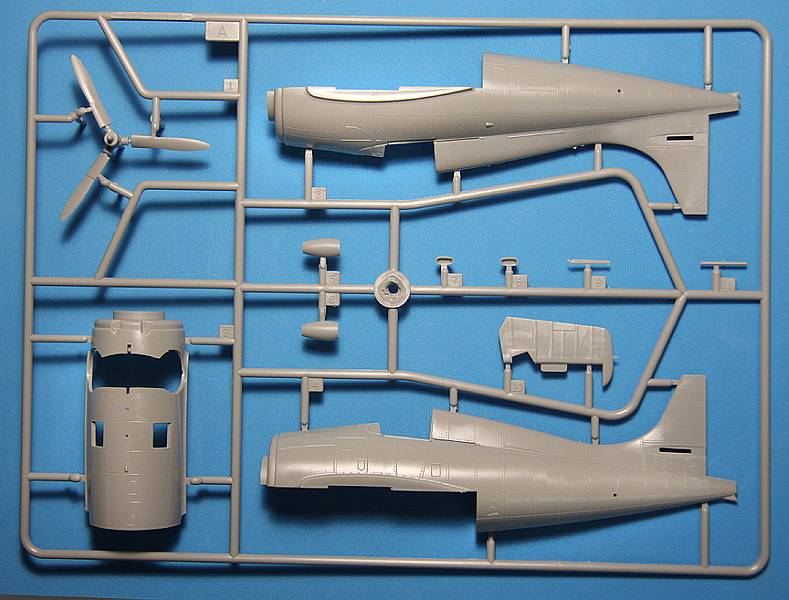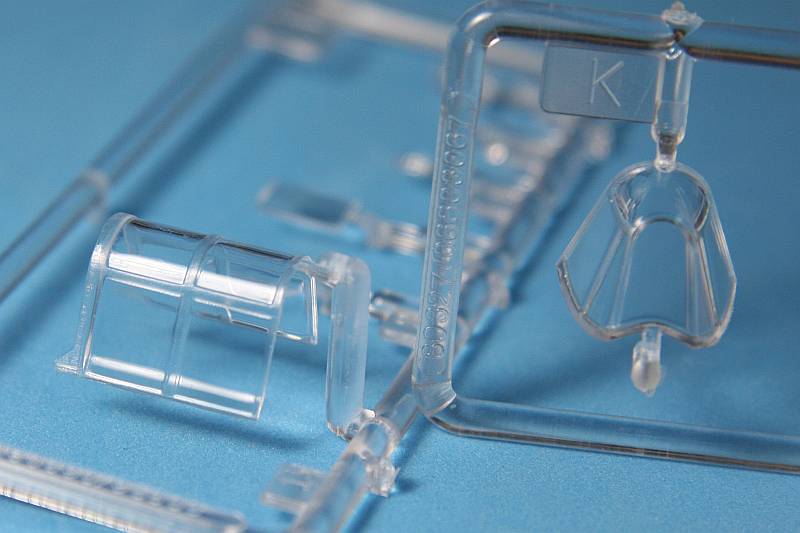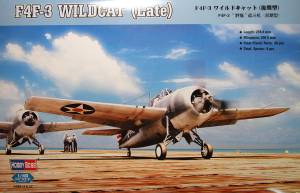
Hobby Boss 1/48 F4F-3 Wildcat (late)
By Mike Whye
Although Hobby Boss has been around the past few years, I finally got a chance to lay my hands on a Hobby Boss kit in early December, the 1/48 F4F-3 (late), Kit No. 80237 and from what I see, it looks pretty nice.
A Short History of a Short Aircraft
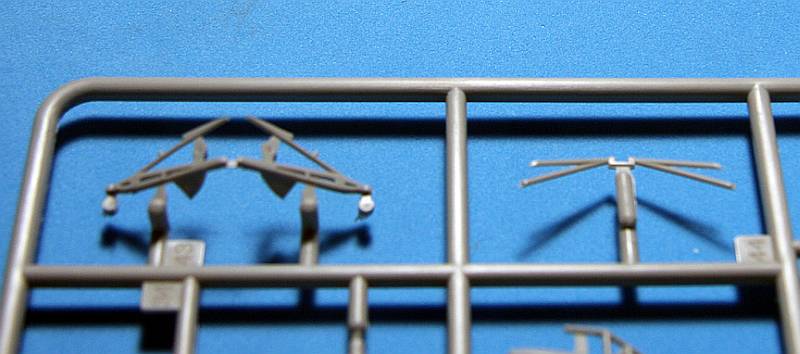 The kit represents a late version of the F4F-3 Wildcat, a short, stubby little aircraft designed by Grumman in the 1930s as a shipboard fighter. Originally slated to be a biplane, the Wildcat evolved into a mid-wing aircraft. The -3 differed from earlier versions by having squared wing tips and four .50 caliber machineguns in the wings. Also, the -3 had fixed wings while later models had folding wings and two more machineguns but those had less performance, in the eyes of some.
The kit represents a late version of the F4F-3 Wildcat, a short, stubby little aircraft designed by Grumman in the 1930s as a shipboard fighter. Originally slated to be a biplane, the Wildcat evolved into a mid-wing aircraft. The -3 differed from earlier versions by having squared wing tips and four .50 caliber machineguns in the wings. Also, the -3 had fixed wings while later models had folding wings and two more machineguns but those had less performance, in the eyes of some.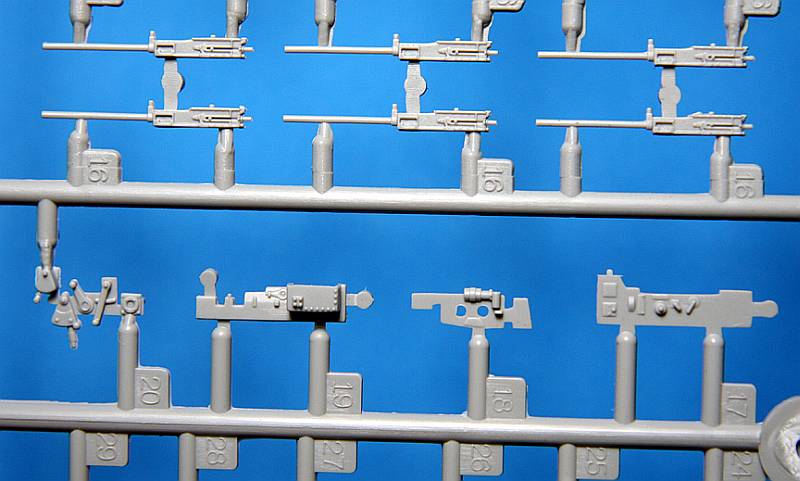 Although mostly associated with the U.S. Navy and Marines in the Pacific Theater during the early part of World War II, the F4F also served with Great Britain--where it was called the Martlet--and scored its first aerial victory--over Scapa Flow in December 1940 when its pilot downed a German Ju-88.
Although mostly associated with the U.S. Navy and Marines in the Pacific Theater during the early part of World War II, the F4F also served with Great Britain--where it was called the Martlet--and scored its first aerial victory--over Scapa Flow in December 1940 when its pilot downed a German Ju-88.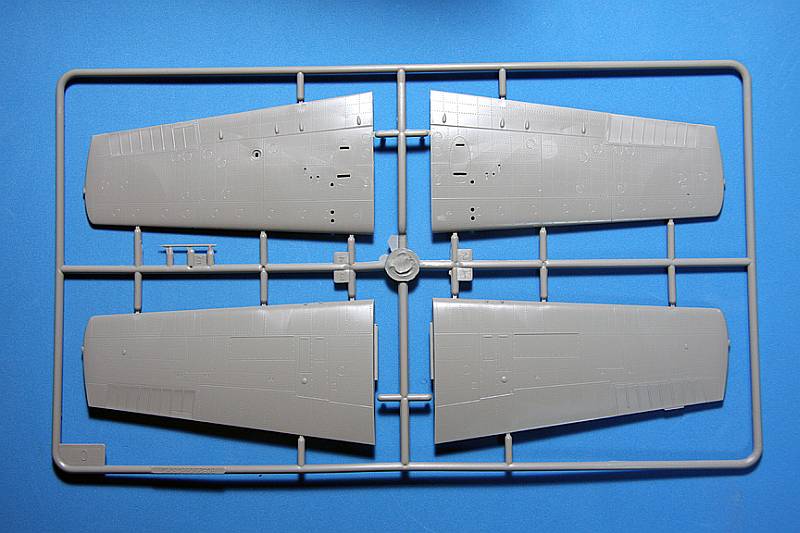 On Feb. 20, 1942, Edward H. ‘Butch’ O’Hare shot down five Japanese Mitsubishi G4M1 Betty bombers, earning the Medal of Honor. Similarly, on Oct. 26 of the same year, Stanley “Swede” Vejtasa downed two Japanese fighters and five torpedo bombers, earning the Navy Cross. Marine ace Joe Foss scored more than 20 kills in a Wildcat and other aces flying the Wildcat included Marion Carl, Richard Galer and Joe Bauer.
On Feb. 20, 1942, Edward H. ‘Butch’ O’Hare shot down five Japanese Mitsubishi G4M1 Betty bombers, earning the Medal of Honor. Similarly, on Oct. 26 of the same year, Stanley “Swede” Vejtasa downed two Japanese fighters and five torpedo bombers, earning the Navy Cross. Marine ace Joe Foss scored more than 20 kills in a Wildcat and other aces flying the Wildcat included Marion Carl, Richard Galer and Joe Bauer. The Kit
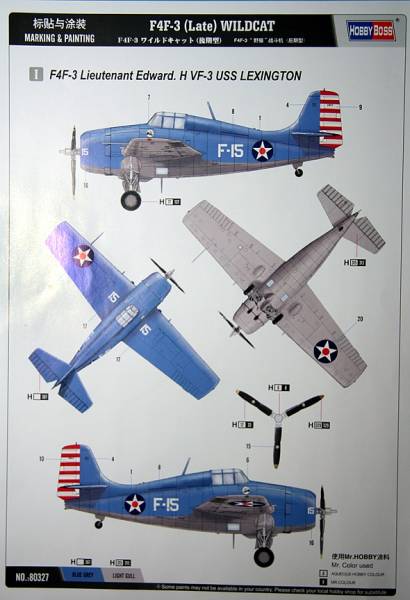 The kit contains four sprues of medium gray styrene plastic. All pieces are made well with no obvious marks that will be seen once the kit is assembled. Panel lines are inscribed and, like the rivets, finely detailed. Sprue A has the three-piece fuselage, propeller, rudder and some small pieces. Sprue C contains the upper and lower pieces of the wings. Sprue F contains most of the smaller pieces such as the drop tanks, horizontal stabilizers, cockpit details (including a nicely-made throttle quadrant plus other sidewall details), wheels, three-piece engine, engine framework and, wrapped by padding, very finely made landing gear struts. Sprue G2 has just one piece--the engine cowling which is specific to the -3. There is no pilot figure if you’re wondering about that. Similarly, if you’re wondering where Sprues B, D, and E are, perhaps with Hobby Boss earlier F4F kit or with other variants still to be seen.
The kit contains four sprues of medium gray styrene plastic. All pieces are made well with no obvious marks that will be seen once the kit is assembled. Panel lines are inscribed and, like the rivets, finely detailed. Sprue A has the three-piece fuselage, propeller, rudder and some small pieces. Sprue C contains the upper and lower pieces of the wings. Sprue F contains most of the smaller pieces such as the drop tanks, horizontal stabilizers, cockpit details (including a nicely-made throttle quadrant plus other sidewall details), wheels, three-piece engine, engine framework and, wrapped by padding, very finely made landing gear struts. Sprue G2 has just one piece--the engine cowling which is specific to the -3. There is no pilot figure if you’re wondering about that. Similarly, if you’re wondering where Sprues B, D, and E are, perhaps with Hobby Boss earlier F4F kit or with other variants still to be seen. 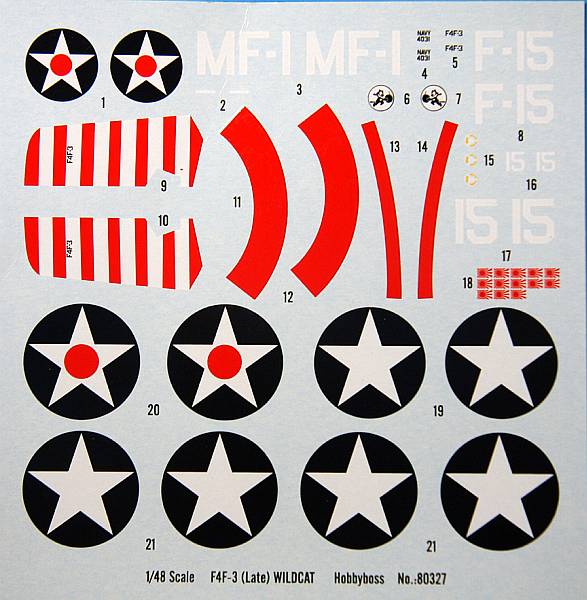 Two sprues of clear plastic have the belly windows, lights, gun sight, canopy and, on a sprue by itself, the windshield unique to the late -3 version. All of these pieces are beautifully clear. Without cutting pieces off the sprues and dry-fitting them, I have no idea if the canopy can be positioned open. On the box top the canopy is shown open but the instructions show it to be assembled in the closed position.
Two sprues of clear plastic have the belly windows, lights, gun sight, canopy and, on a sprue by itself, the windshield unique to the late -3 version. All of these pieces are beautifully clear. Without cutting pieces off the sprues and dry-fitting them, I have no idea if the canopy can be positioned open. On the box top the canopy is shown open but the instructions show it to be assembled in the closed position. All told, the kit has 80 pieces.
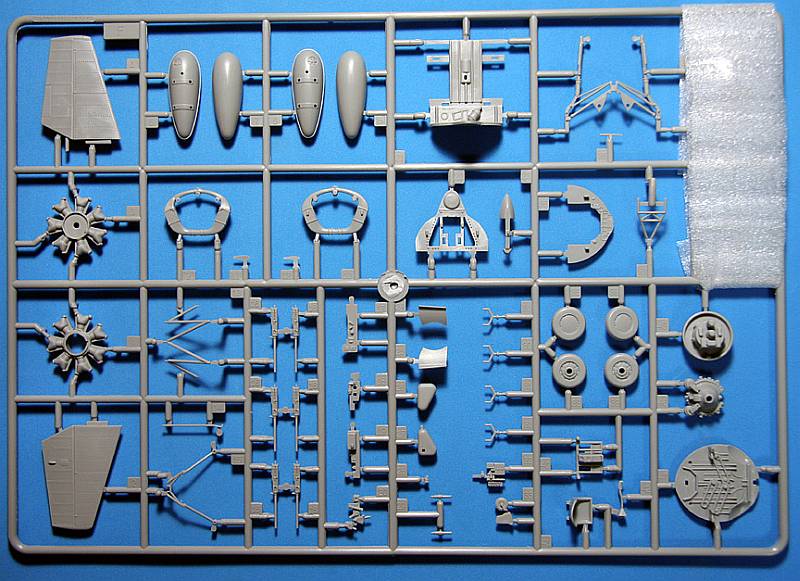 The kit includes a six-panel set of black-and-white instructions that clearly illustrate what goes where and what piece is to be painted what color, as related to the Aqueous and Mr. Hobby paint lines. A two-panel four-color sheet shows the paint schemes and decal placement for the Wildcats flown by O’Hare and Galer (although the sheet incorrectly notes that O’Hare’s Wildcat was flown by “Lt. Edward H”). The glossy waterslide decal sheet has everything in registration plus Galer’s 13 kill markings.
The kit includes a six-panel set of black-and-white instructions that clearly illustrate what goes where and what piece is to be painted what color, as related to the Aqueous and Mr. Hobby paint lines. A two-panel four-color sheet shows the paint schemes and decal placement for the Wildcats flown by O’Hare and Galer (although the sheet incorrectly notes that O’Hare’s Wildcat was flown by “Lt. Edward H”). The glossy waterslide decal sheet has everything in registration plus Galer’s 13 kill markings. Each sprue comes in its own sealed plastic bag, as does the decal sheet which is covered by a piece of wax paper. For some reason, although the wax paper and the decal sheet fit snugly into their sealed plastic bag, the wax paper was taped to the back of the decal sheet. If you don’t plan to build this kit immediately, I recommend opening the bag and removing the tape from the back of the decal sheet; in long storage, that might cause a problem for all I know.
Assembly
Assembly of the kit appears to be straight-forward and nothing more complicated than the early Monogram kits. If it weren’t for the finer pieces such as the engine frame and landing gear, I’d say that anyone from about the age of 8 on up could handle this kit with ease. About the only detail
 that I’d add to this kit would be a set of aftermarket seatbelts. Overall, this kit looks like it would take a few leisurely evenings and be rather simple to build, paint and decal.
that I’d add to this kit would be a set of aftermarket seatbelts. Overall, this kit looks like it would take a few leisurely evenings and be rather simple to build, paint and decal.
 that I’d add to this kit would be a set of aftermarket seatbelts. Overall, this kit looks like it would take a few leisurely evenings and be rather simple to build, paint and decal.
that I’d add to this kit would be a set of aftermarket seatbelts. Overall, this kit looks like it would take a few leisurely evenings and be rather simple to build, paint and decal. The box top art reminds me of a bleached-out photo-realistic painting that shows a pair of F4F-3’s on a wooden aircraft carrier deck.
The kit has an MSRP of $33.99. I think the price is high but it is a good kit and will build into a fine model for your collection.

